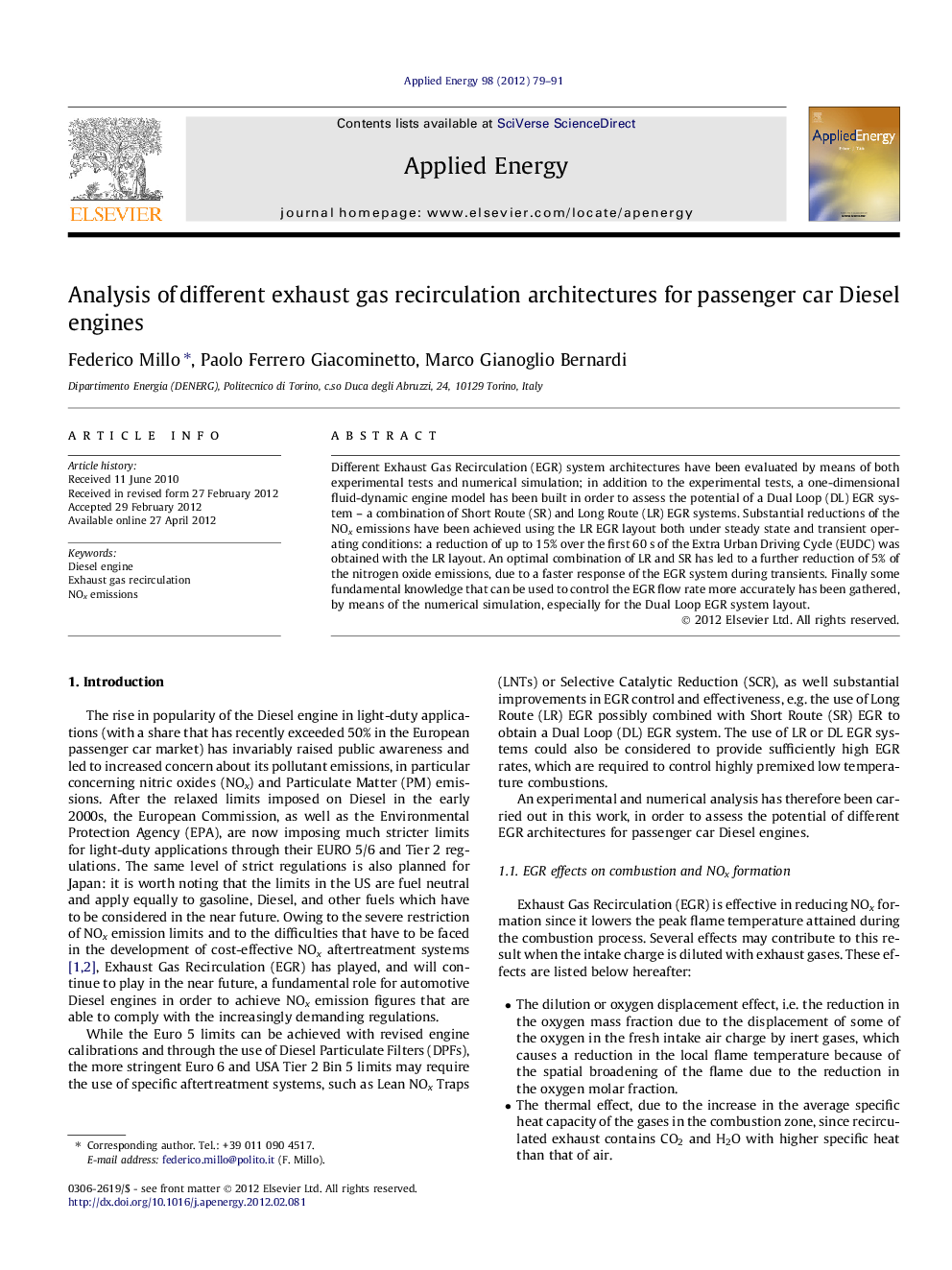| Article ID | Journal | Published Year | Pages | File Type |
|---|---|---|---|---|
| 243193 | Applied Energy | 2012 | 13 Pages |
Different Exhaust Gas Recirculation (EGR) system architectures have been evaluated by means of both experimental tests and numerical simulation; in addition to the experimental tests, a one-dimensional fluid-dynamic engine model has been built in order to assess the potential of a Dual Loop (DL) EGR system – a combination of Short Route (SR) and Long Route (LR) EGR systems. Substantial reductions of the NOx emissions have been achieved using the LR EGR layout both under steady state and transient operating conditions: a reduction of up to 15% over the first 60 s of the Extra Urban Driving Cycle (EUDC) was obtained with the LR layout. An optimal combination of LR and SR has led to a further reduction of 5% of the nitrogen oxide emissions, due to a faster response of the EGR system during transients. Finally some fundamental knowledge that can be used to control the EGR flow rate more accurately has been gathered, by means of the numerical simulation, especially for the Dual Loop EGR system layout.
► Different EGR architectures for passenger car Diesel engines analyzed. ► Long Route EGR system extremely effective, but with poor transient response. ► Use of a Dual Loop EGR layout , combining both a LR and a SR system, preferable.
